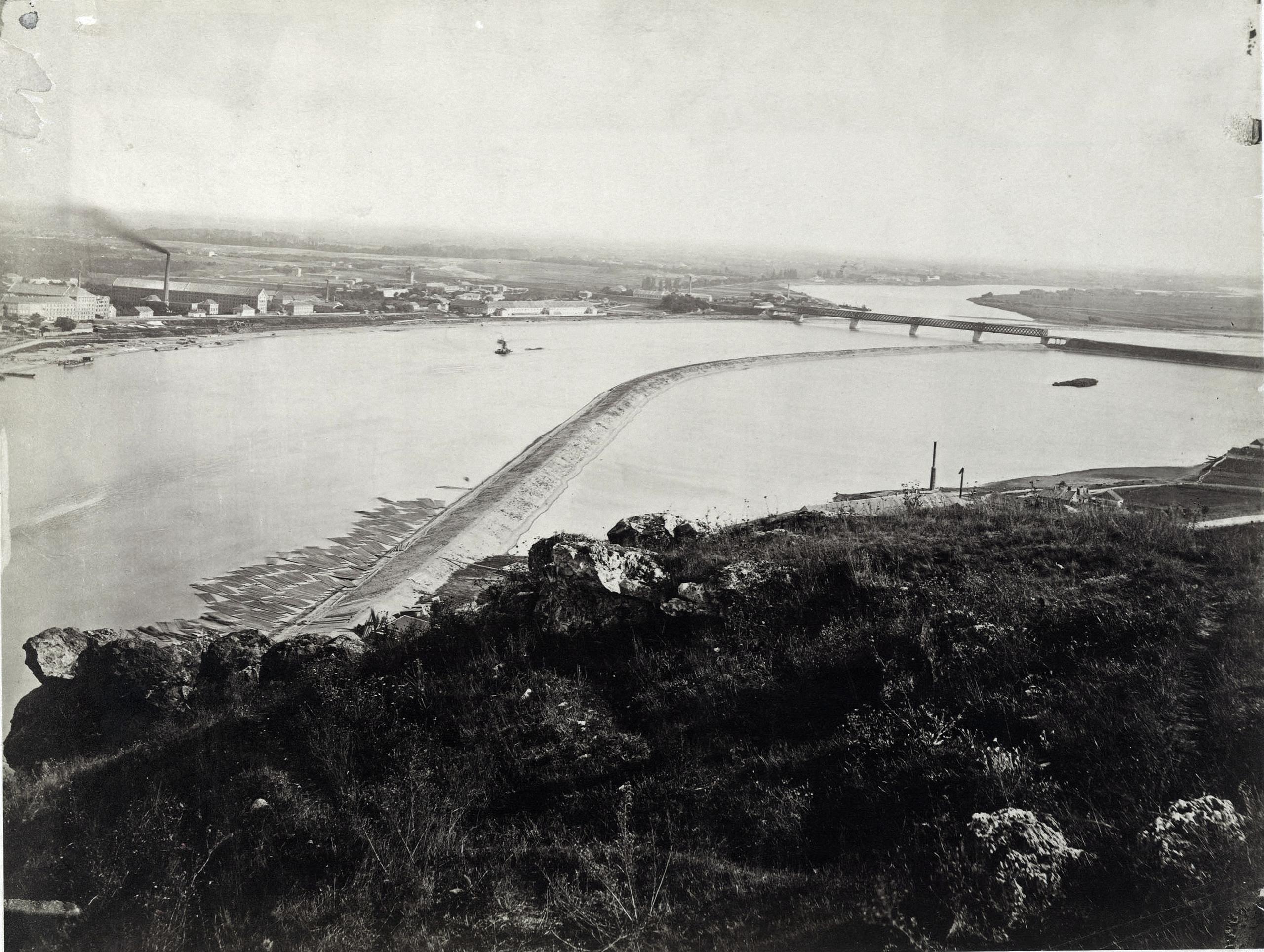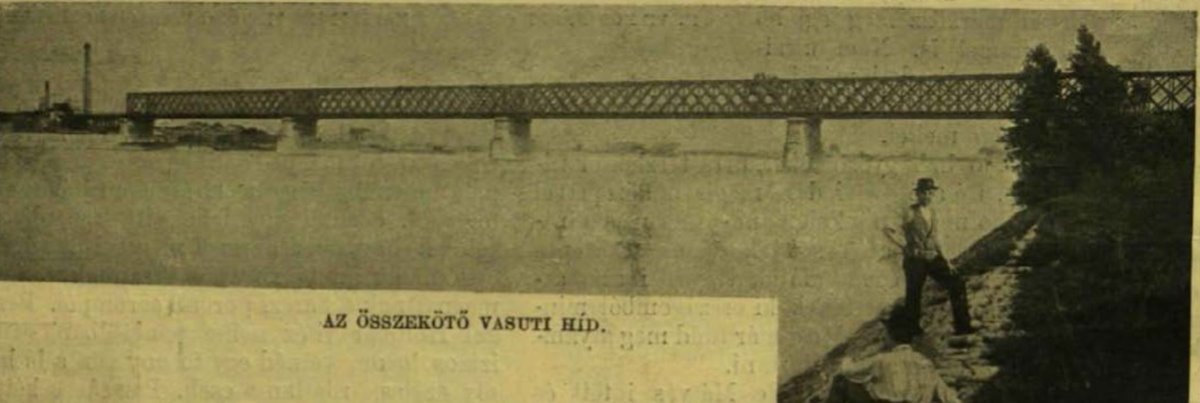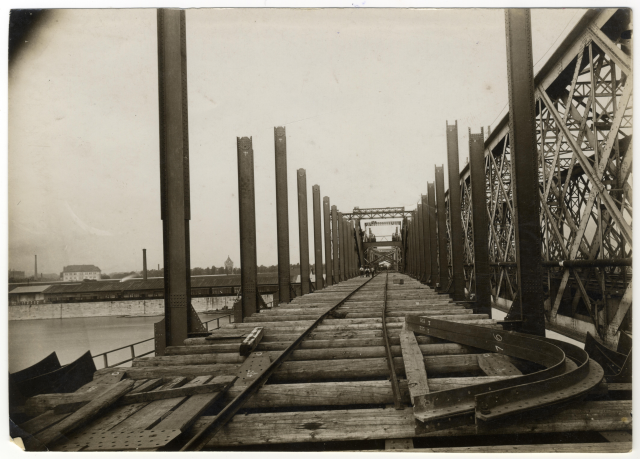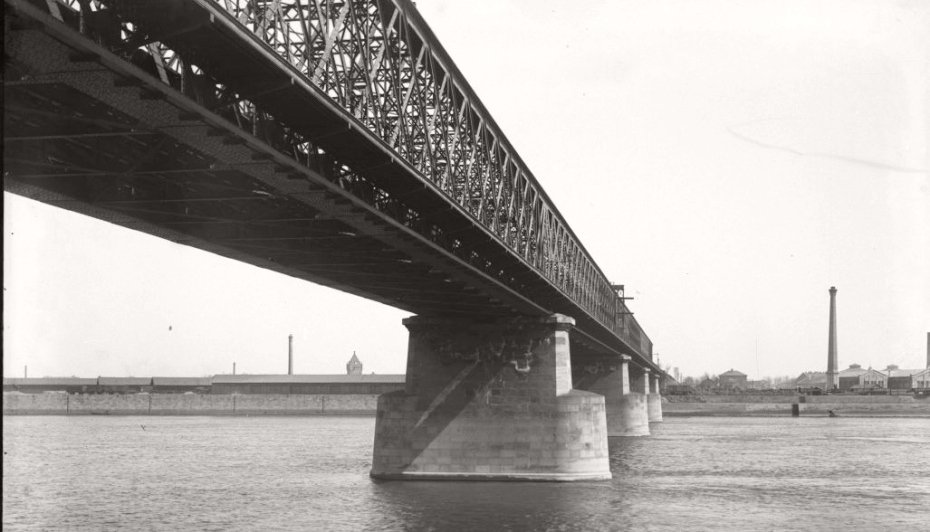The Connecting Railway Bridge was opened to traffic on 23 October 1877, which established the railway connection between the two parts of the country, since no railway bridge had crossed the Hungarian section of the Danube until then.
There was much debate about where this connection should take place. In the 1860s, everyone envisioned connecting the railway lines in the north, along the present-day Margit Boulevard – Margit Bridge – Szent István Boulevard route, but in 1869 the government decided in favour of the southern route. One of the reasons for this was that Hungarian State Railways (MÁV) was already operating at the time, whose lines started from the former Józsefváros railway station, and it was also important for the government that the railway crossing the Danube should not be managed by private railway companies.
If the northern connection had been built, it would have connected the two private railways and not connected it to the MÁV network. On the other hand, they wanted to implement other plans in the north, the Margit Bridge and the elegant Outer Ring Road, and therefore rather supported the longer, more expensive southern connection.

The bridge led far from the city when it was handed over (Photo: Fortepan/Budapest Archives, Reference No.: HU.BFL.XV.19.d.1.06.063)
There was also a plan to run the railway further, through Csepel, but in the end, they decided on a route closer to the city. It was also at this time that the idea of building a new central railway station for MÁV arose. The idea was accepted, but the central railway station was not opened then, but years later, in 1884, which is today's Keleti Railway Station.
A tender was called for the construction of the bridge, and it was won by a French consortium consisting of Filleul-Brohy and Cail et Cie, the latter of which had large ironworks near Paris. However, the start of construction was somewhat hindered by the fact that there was no proper plan because it was originally supposed to be given by the Hungarian authorities, but they did not find it economical enough. The French also came up with three plans, but these were also not suitable. Suddenly, the French came up with an idea that was significantly different from the previous ones, which they probably bought from János Feketeházy. Although Feketeházy was still a relatively young engineer who worked in another department of the MÁV, he had already been working on the design of a railway bridge over the Danube for years, which was presumably bought from him by the French. The exact events are not known but it is probable from the available data. Interestingly, his name is not mentioned anywhere as a designer until 1877, while after that, as we will see, it is.

The bridge in the 26 October 1902 issue of Vasárnapi Ujság
The construction started in 1873 and did not really go smoothly, presumably by the end the relations between the Hungarian authorities and the French entrepreneurs deteriorated. This was also contributed to by a case where the responsible French engineer was quickly taken home following a water intrusion accident, and therefore could not be held responsible here. Moreover, at the end of the investment, everyone sued everyone, the French sued each other in Paris, while together they sued the Hungarian government here. The subject of the discussion was a significant sum of money, which the contractors would have received in case of good performance, but the Hungarian side withheld this.
Despite the confusion and disputes, the French contractors finished the work by 31 March 1877, but the bridge could not be handed over even then, the main reason for which was that the connected railway was not completely ready. The bridge and the connected railway line were owned by the Hungarian State Railway, MÁV, but two private railway networks were also connected to it, in Pest, the Austrian State Railway (which, contrary to its name, was a private railway) and Buda the Southern Railway, and the bridge could only be opened after the coordination of railway signals, instructions and other rules. On 25 October 1877, Fővárosi Lapok wrote the following about the opening itself:
"Pedestrians have been walking on the connecting railway bridge since the day before yesterday, especially residents of Promontor and Tétény coming and going to the capital. As already mentioned, this great railway bridge, which has no equal in the entire Danube, was designed by the engineer János Feketeházy. The iron works were made by the Parisian factories of Cail et al. It is a very strong work."
In fact, foot traffic was negligible, so much so that no tolls were collected from pedestrians. On the other hand, traffic on the two-track bridge continued to increase, and in the following decades, the mass of railway trains and locomotives also increased significantly. Defects in the French-made iron material also began to appear, so by 1913, a completely new bridge was built next to the old one, which was then closed and only demolished after the war.

Construction of the new bridge next to the old one in 1913 (Photo: Hungarian National Museum, Inventory number: 280/1948 fk)
The opening of the connecting railway in 1877 brought significant changes for Budapest as well. On the one hand, in the case of rail transport between the two parts of the country, there was no need to load the goods onto carts and transport them over a bridge – until 1876, exclusively over the Chain Bridge – which also reduced transport costs, and on the other hand, it gave hope that Budapest would become more involved in international trade. On 1 November 1877, the Vasút Közlöny wrote:
"Through this railway, the capital city gains a very important factor for stabilising the substantial transit traffic between the north-east and south-west regions, and it also has the possibility that, on the one hand, the direction of international trade towards Galicia and Russia, and on the other hand, trade from between the ports of the Adriatic Sea and Upper-Italy could be diverted through Budapest, provided that the respective railway companies, together with the trading world, can use this opportunity to their advantage through appropriate procedures and measures."
The southern location of the railway bridge fundamentally determined the development of Budapest. Partly because of the railway (and partly because of the Soroksári Road mills), the Budapest - Dunapart freight station (where the Millennium City Centre stands today) was moved to the south, the public warehouses were built here - the remaining buildings of which are parts of today's Bálna - as well as the Elevátor, which was destroyed in World War II, i.e., the logistics centre of the capital was built here.
In the Buda part, this railway bisected the Lágymányosi Bay formed by regulating the Danube, the northern half of which was continuously filled in the 19th century, and today the University of Technology is located here.
The railway line and the bridge are still one of the most important fixed-track connections in the country, today the sixth bridge - which is actually three completely identical bridges next to each other - stands here, the most recent reconstruction was completed a few months ago.
Cover photo: The bridge shortly after its completion. Recorded by Loránd Báró Eötvös (Photo: Hungarian Museum of Science, Technology And Transport, Inventory number: TFGY 2019.1.2277)




































Hozzászólások
Log in or register to comment!
Login Registration